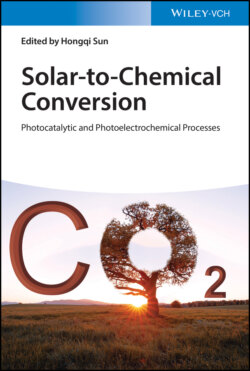Читать книгу Solar-to-Chemical Conversion - Группа авторов - Страница 14
2.2 Photosynthesis 2.2.1 Natural Photosynthesis
ОглавлениеPhotosynthesis is a chemical process that occurs in photoautotrophs (organisms that make their own food), in which light energy is converted into sugars and other organic compounds. It consists of a series of chemical reactions that require carbon dioxide and water to begin [5]. The light energy that hits the photoautotrophs is absorbed and drives these chemical reactions to produce carbohydrates and oxygen as a by‐product. The following equation is the basis of photosynthesis:
(2.1)
In past several decades, the rough photosynthesis paths have been reported by scientists based on excessive studies. In the plants, the chloroplast in leaf can absorb the sunlight and trigger the above reaction proceeding in the presence of a series of bioenzymes, such as chlorophyll II. Meanwhile, CO2 from the air is captured by the leaf through diffusion process and brought to the chloroplast. Finally, the chlorophyll II excited by incident light catalyzes water split and releases hydrogen and oxygen. After that, the oxygen atoms are formed dioxygen and escape from chloroplast to air. Meantime, the hydrogen atoms react with CO2 molecules into hydrocarbons, such as glucose. Until now, the plants fulfill the great photosynthesis process, which creates the suitable ecosystem for advanced living things, in which chemical fuels and O2 can be further consumed to provide energy for aerobic organisms.
By systematically analyzing the process of natural photosynthesis, it can be found that CO2 and water are the initial reactants and chlorophyll II as a catalyst is necessary to accelerate the reaction under sunlight irradiation. Generally speaking, CO2 and water are abundant and cheap in the Earth, which can be obtained easily. Nevertheless, the reaction between CO2 and water cannot proceed in thermodynamic aspect [6]. Therefore, for chemists, it is necessary to develop an efficient catalyst for triggering the photosynthesis reaction, which helps that the O2 and chemical fuels can be produced in a cheap and sustainable way in a factory. Based on this inspiration, simulating natural photosynthesis process is a relentless pursuit for scientists, which is called as artificial photosynthesis [7].
